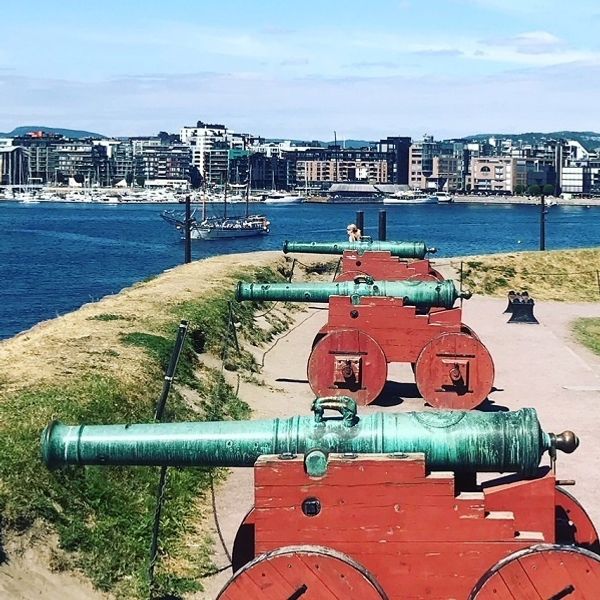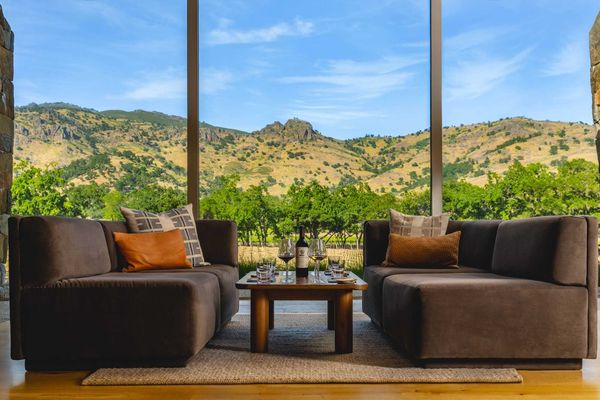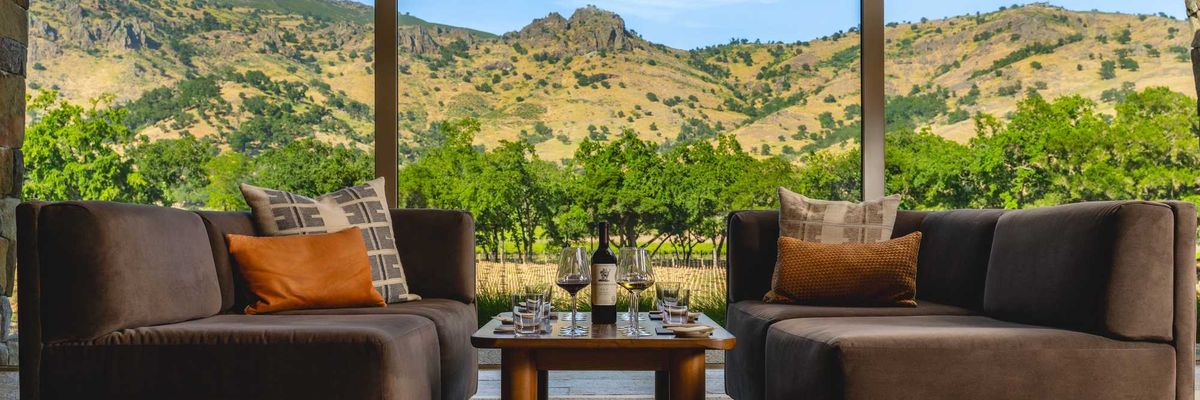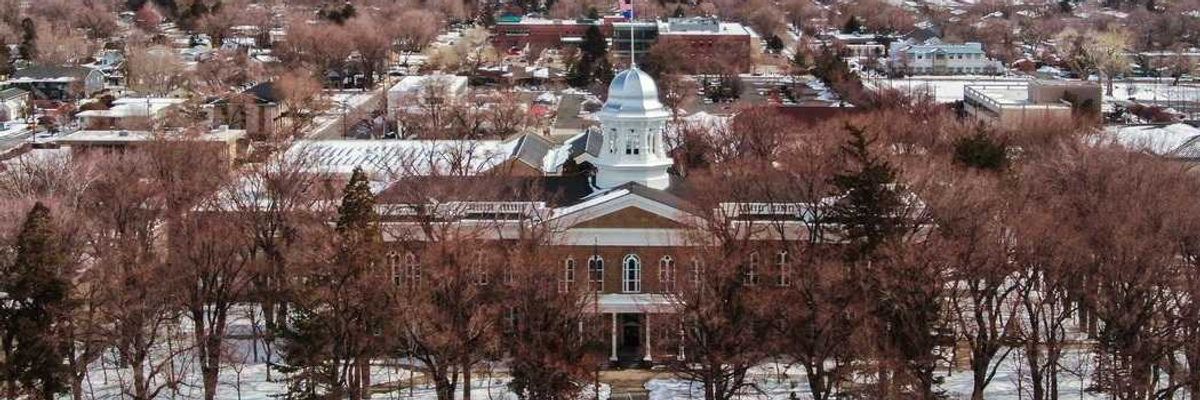For being the largest city in one of the world's wealthiest countries, Oslo is surprisingly serene. Sure, there's hustle-and-bustle, but it's decidedly more laid-back, even in the city's center, than most other European capitals.
Parks and green space are an important part of Oslo's layout and mindset and, on nice days, they are teeming with sunbathers and picnickers. Sound familiar, San Franciscans?
Neighborhoods to know
Sentrum is the heart of the city and home to Oslo's most important civic and state buildings—i.e. the city's most spectacular monumental architecture, including the Royal Palace. Many of these landmarks—the Opera House, the Oslo Cathedral, the Norwegian Parliament, and the Radhuset (host of the Nobel Peace Prize ceremonies)—can be entered on your own or on a guided tour. Even if you chose to stay outdoors, a stroll through the Sentrum and along the adjacent waterfront harbor is time well spent. From the Oslo Central Station located here, you can access the metro and regional trains. Across the street from the station's entrance you'll find stops for a number of bus lines, including one to Bygdøy. Tickets can be bought from machines or at 7-11 with a single-ride ticket costing 35NOK ($4.30) and a 24-hour tourist transportation ticket is 105NOK ($12.90).
Many of Oslo's best museums are located on the Bygdøy Peninsula, about a 30 minute bus ride from the Central Station, including the can't-miss Viking Ship Museum. On Bygdøy, you'll also find the Norsk Folkmuseum and the Kon Tiki Museum, commemorating the life and work of Thor Heyerdahl, who crossed the Pacific Ocean on a balsa raft in 1947.
Formerly a working-class neighborhood, today Grünerløkka is the place to see and be seen. You'll find many of Oslo's best restaurants, boutiques, and bars here, including a handful of beer gardens on the banks of the Akerselva River.
Not much survives from Oslo's earliest days—the entire city was destroyed by fire 14 separate times before 1624, so most of today's landmarks were built in the 19th century. Oslo does have a neighborhood, Gamle Oslo, that serves as its old town, but it can be disappointing for a modern traveler.
What to Do
The Viking Ship Museum (Huk Aveny 35) isn't massive and it really only houses one thing—3,000-year-old Viking burial ships that were discovered in the late 19th and early 20th centuries—but it's a must-see nevertheless. Among them is the Gokstad, the world's best-preserved Viking ship, which took its final journey as a burial chamber for a powerful man killed in battle in 900 C.E. Incredible offerings from his burial and those of the other ships are also on display at the museum.
The world's largest sculpture park presenting the work of only one artist, The Vigeland Park (Nobels gate 32) is a beautiful green expanse accented by the bronze, granite, and iron works of Norwegian sculptor Gustav Vigeland. The 200 pieces are both beautiful and strange; all human figures in varying stages of life experience, some reveling and joyous, others wreacking havoc or suffering. Walk the sculpture gamut that runs along an 850-meter axis from the main gate, across a bridge to a fountain, then up to the monolith plateau and The Wheel of Life, a 1930s wreath of female figures that symbolizes eternity. Entrance is free, and on nice days the park is filled with lounging Oslo natives soaking up the sun. An on-site museum will introduce you to some of Vigeland's less monumental works.
This historic Akershus Fortress (Forsvarsbygg, Grev Wedels Plass 5) and prison has been looming over Oslo's harbor for the last 700 years. Still in use by the Norwegian armed forces today, it can nevertheless be explored (for free!) any day of the week. Without a guided tour, however, you may be disappointed—there isn't much information provided and the doors to the buildings are locked. In the summer, several guided tours run daily in English; September through May they are given on weekends. Don't miss the small, on-site Norwegian Resistance Museum which chronicles the occupation of Norway by German forces in World War II.
The preservation of historical architecture is a Norwegian value found in "open air museums" throughout the country, from Oslo to Trondheim. In these often multi-acre parks, traditional homes, farms and other structures have been transferred from their original locations and set up with period-appropriate furniture. The Norsk Folkmuseum (Museumsveien 10) was the world's first, established in 1881. In addition to two museums filled with Norwegian folk art and artifacts, the Folkmuseum has 160 structures, including a wooden stave church from the 13th century, a number of sod-roofed farms and an "old town" containing different stores and workshops, to peer inside and stroll through.
Eat + Drink
While Oslo doesn't have the breadth of choices you'll find in the other Scandinavian capitals, there are a number of excellent restaurants serving up modern and traditional Norwegian fare. Alcohol in Oslo is, hands down, the most expensive part of any night out, with a standard draught beer typically costing around $11 a pint; craft beer, wine and cocktails will run you quite a bit more.
Engebret Cafe (Bankplassen 1) is the oldest restaurant in Oslo has been serving traditional Norwegian fish and meat dishes for 150 years. For an eye-opening starter, try the "taste of northern Norway," which includes bites of smoked whale fillet, marinated clipfish and cured reindeer. While their dining rooms and outdoor patio are somewhat elegant, touches like heraldic shields and bright patterned wallpaper keep things fun.
Mathallan Food Hall (Vulkan 5) is Oslo's answer to the San Francisco Ferry Plaza. Thirty shops and restaurants inside showcase high-quality Norwegian fish, cheese and more. In the basement, you'll find Smelteverket, a lively gastropub with a super-long wooden bar. At the Vulkanfisk fish restaurant and market, try some of Oslo's best simple seafood dishes.
Next door to the Mathallan Food Hall, this trendy "industrial-chic" restaurant-bar Bar Vulkan offers modern Scandinavian small bites made with care. The rooftop terrace, open throughout the summer, has a great view of the city.
Sip your microbrew by candlelight in the cozy underground cellar that is Schouskjelleren Microbrewery (Trondheimsveien 2) The brick walled bar has an almost monastic feel, with austere, high-backed wooden booths and a working fireplace at one end, while the reverence of the brewers is palpable in the sours, IPAs and pilsners that rotate regularly.
Gradi (Søorligata 40), in unassuming Tøyen, serves up delightful Norwegian-influenced international dishes in small bites perfect for sharing. For a taste of the traditional, try the lompe, a potato pancake bread filled with meat, fish, or veggies. The bright, simple but stylish space is great for brunch, lunch or dinner, and the adjacent square is set with tables in warm months.
Where to Stay
Luxury on the Oslo harbor comes in the form of The Thief Hotel (Landgangen 1), where rich colors and art installations make for an impressive boutique hotel. The rooftop bar, with its panoramic views of the city and the water, is a popular destination. In the rooms, you'll find plush bedding, floor-to-ceiling windows and spacious bathrooms. Rooms from $335/night.
First Hotel Millennium (Tollbugata 25), a clean, moderately priced hotel in Oslo's city center would, in and of itself, be a win. The First Hotel Millennium offers not only that, but a bit of Scandinavian style and a massive breakfast buffet to boot. Just steps from the Central Station. Rooms from $123/night.





















